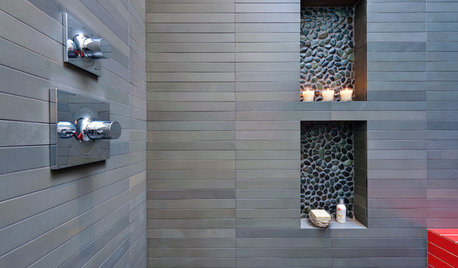Water Softener Sizing Round 2
ribs1
12 years ago
Related Stories

GARDENING GUIDESGreat Design Plant: Northern Maidenhair Fern Softens Shade Gardens
Stir up some romance in dark corners with the billowy fronds of native Adiantum pedatum
Full Story
REMODELING GUIDESRiver Rock Rounds Out Rooms
Worn smooth from rushing water, river rocks add an organic, serene touch to bathrooms, fireplaces, patios and more
Full Story
GARDENING FOR BUTTERFLIESBring on the Birds: Natural Habitat Ideas for Gardens of All Sizes
Provide nesting, watering and perching spots inspired by the Costa Rican jungle and watch the birds flock on over
Full Story
DECORATING GUIDESSize Up the Right Area Rug for Your Room
The size of a rug can make an important difference to the feel of a room. Here are some tips to help you make the right choice
Full Story
SMALL HOMESHouzz Tour: A Student's Bed-Size Shelter in the Arizona Desert
Could you sleep in such a small space just above the desert floor? One Taliesin architecture student at a time does just that
Full Story
CONTAINER GARDENSPocket Gardens, Pint-Size Patios and Urban Backyards
A compact outdoor space can be a beautiful garden room with the right mix of plantings, furniture and creativity
Full Story
HISTORIC HOMESWright Sized in Alabama: The Rosenbaum House
Get lessons in Usonian living from the design and evolution of a historic Frank Lloyd Wright home
Full Story
FURNITUREEclectic Matchups: 10 Round Dining Tables With Chairs
Check out these ideas for pairing round tables with complementary chairs of different styles
Full Story
HOUZZ TVHouzz TV: Travel Back to the 1960s in a Most Unusual Round House
An Oakland, California, couple’s midcentury circular home provides a stunning time capsule for all-out vintage modern style
Full Story
FURNITUREUse Wicker and Rattan for a Tropical Flavor All Year Round
Find out more about what separates — and unites — these classic materials
Full StoryMore Discussions






User
ribs1Original Author
Related Professionals
Boise Plumbers · Auburn Kitchen & Bathroom Remodelers · Biloxi Kitchen & Bathroom Remodelers · Champlin Kitchen & Bathroom Remodelers · Charlottesville Kitchen & Bathroom Remodelers · Londonderry Kitchen & Bathroom Remodelers · Martha Lake Kitchen & Bathroom Remodelers · Niles Kitchen & Bathroom Remodelers · Overland Park Kitchen & Bathroom Remodelers · Pasadena Kitchen & Bathroom Remodelers · Westchester Kitchen & Bathroom Remodelers · Winchester Kitchen & Bathroom Remodelers · Ridgefield Park Kitchen & Bathroom Remodelers · Ojus Kitchen & Bath Fixtures · Paradise Kitchen & Bath FixturesUser
ribs1Original Author
User
ribs1Original Author
User
ribs1Original Author
User
ribs1Original Author
goodguy2k2k
User
User